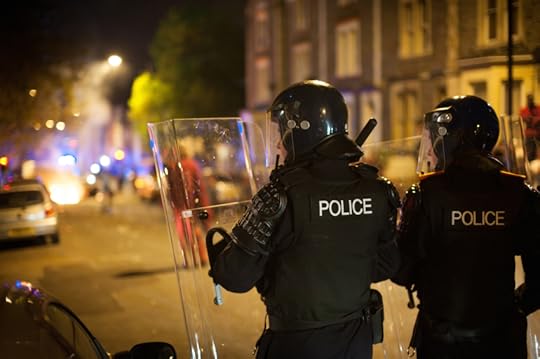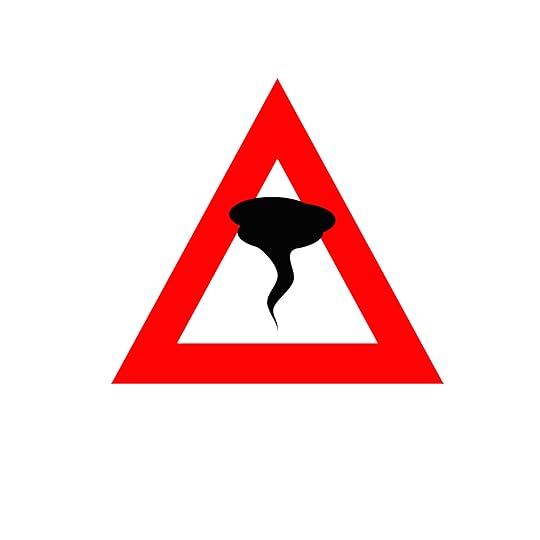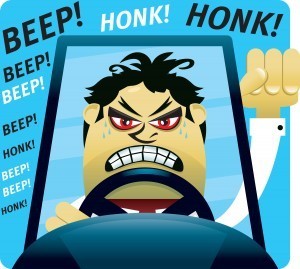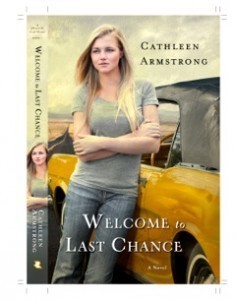Janice Cantore's Blog, page 2
October 4, 2014
Police Work : Fact or Fiction

 I don’t watch much TV. One show I do enjoy is Castle. While at a writer’s conference some one made a statement and asked me a question, “But it’s so fake as far as law enforcement is concerned, don’t all the mistakes bug you?” The question brought me back to my writing beginnings. So many times I was told my writing was too much like a police report, just the facts. I wanted realism, but in truth, too much realism can be boring. Yes, I want my stories to be realistic, but I also recognize that people must want to turn the pages so I could never pen a story that followed realism completely. For example, one of the things about Castle that could be called “fake” are the times she and her team bust down a door to execute a warrant or chase a bad guy. Kate puts on her vest and Castle straps on his and away they go! Not.
I don’t watch much TV. One show I do enjoy is Castle. While at a writer’s conference some one made a statement and asked me a question, “But it’s so fake as far as law enforcement is concerned, don’t all the mistakes bug you?” The question brought me back to my writing beginnings. So many times I was told my writing was too much like a police report, just the facts. I wanted realism, but in truth, too much realism can be boring. Yes, I want my stories to be realistic, but I also recognize that people must want to turn the pages so I could never pen a story that followed realism completely. For example, one of the things about Castle that could be called “fake” are the times she and her team bust down a door to execute a warrant or chase a bad guy. Kate puts on her vest and Castle straps on his and away they go! Not.
In my city, (I can’t speak to policy for every department) breaking down doors and clearing a building or apartment of threats was not what detectives did. That was left to SWAT, guys who trained regularly to bust in doors and clear buildings safely and quickly of danger. Once they gave the all clear, then in went the detectives. But that would be pretty boring if Kate and Castle had to wait down on the street for some nameless guy in a SWAT uniform to give her the all clear to enter a now safe environment. It’s a pretty harmless deviation from reality to watch Kate, with Castle right behind in his “Writer” vest, bust in and chase down bad guys.
I guess I could go on and on, picking at this and that, but I really just like to get lost in the fantasy of Castle without thinking about how it should really be done.
But there is one deviation from reality in cop shows that does bother me, and I don’t recall a specific example in Castle, but I’ve seen it other places, is the idea of “shooting to wound,” you know, we want the guy alive, or he’s really not a bad guy, just confused, so try to wing him. Using deadly force is serious, and we are trained that it is only appropriate in the event of a serious threat to life, yours or another person. That being said, if the threat is serious enough to warrant your gun drawn and up on target, you aim for center of mass, the largest target available. A threat to life must be STOPPED, there is no margin to try and “wing them.” Any one who has been in that situation, I don’t care if they are an expert marksman, the adrenaline is pumping, you cannot afford a miss, and aiming for an arm, a hand, would be too great a chance for a miss. This one bothers me because I have heard people say after a shooting, “he could have just wounded him,” casting doubt on the officer’s intentions. A shooting is split second, life or death, I hate to see officers second guessed about where they should have aimed.
In writing novels I’ve been told, you have to leave the boring parts out. I try to walk that fine line between realism and enough suspense and thrills to keep a reader turning pages. Maybe realism suffers a bit, but when I remember cruising dark streets in the wee hours of the morning, occasionally struggling to stay awake in my patrol car on slow nights, looking for anything to do, including just writing a ticket for expired registration, I know that there are some things that are better exaggerated or left out all together.
The post Police Work : Fact or Fiction appeared first on Janice Cantore.
August 12, 2014
Riots and Looting

Over the weekend riots erupted in Missouri over the shooting of an unarmed man by police. (http://hotair.com/archives/2014/08/11...) This post is not meant to comment on the shooting, because all of the facts are not in and I’ve always believed that it is irresponsible to comment with out all the facts. This post is meant as an observation about the riot, and riots in general.
 I was a relatively new officer during the Rodney King riots in LA in the early 90′s. Those riots were not pretty. I say those, because the unrest was not limited to Los Angeles, though that was where everything started. We saw our share of issues in Long Beach, including looting, one homicide, and businesses being burned to the ground.
I was a relatively new officer during the Rodney King riots in LA in the early 90′s. Those riots were not pretty. I say those, because the unrest was not limited to Los Angeles, though that was where everything started. We saw our share of issues in Long Beach, including looting, one homicide, and businesses being burned to the ground.
The day the verdict was read I was working day patrol and at first nothing seemed out of the ordinary. Everything changed when school got out. The first rioting crowds were teenagers from local high schools.
I remember responding to absolute insanity as crowds of kids tried to storm the local mall. It made no sense to me; How does stealing from someone who had nothing to do with your grievance change anything?
To say the department was unprepared would be an understatement. We faced rock and bottle throwing without helmets or riot gear. Organization came slowly, but the chief was able to convince mall merchants to close early and a small group of us, about 20, were able to keep a group of about 100 – 200 teens from making it to the mall.
That was one small victory. Once the growing mob saw they couldn’t get to the mall, they turned and ran, straight for a grocery store. They threw debris, knocked over newspaper stands, ran over cars along the way and did as much damage as they could before storming the market and there was nothing we could do to stop them.
For the rest of the day and into the night were went from incident to incident, really serving as a small plug in a flood. And the crowd became older and meaner. I understood that there was a perceived injustice with the verdicts in the King trial, what I didn’t understand was what the looting and the rioting was going to solve. In fact, I interacted with looters who had no idea what the verdict was, but saw an opportunity to steal and not get caught. Because we were overwhelmed a lot of looters were ordered to drop their loot and leave the area. Of course, there was no way to be certain they did leave.
The riots I saw showcased the worst traits in humanity. They did nothing but destroy the neighborhoods and services for the very people who believed they were wronged. In reading about the riots in Missouri, a lot of the people who caused destruction and looted were not even from the area, they came from other towns to steal and destroy. (http://www.kmov.com/special-coverage-...) Other reports say the looters are proud of what they are doing, boasting on social media.
Years ago, standing in the middle of a darkening street, outnumbered by hundreds of out of control looters, realizing that I was a target for any one who wanted to shoot, or throw a bottle, is something that will forever be branded in my mind. Rioting and looting solves nothing and as far as I’m concerned is never justified. It is only an excuse for the baser instincts in a person to come to the surface. And it is ugly in any context.
The post Riots and Looting appeared first on Janice Cantore.
July 11, 2014
A Brief Rant: Irritating Things About the Internet

 I do appreciate the Internet and its myriad of functions: information repository, social interaction facilitation, avenues for marketing, selling, buying, etc. But there are a few things that get on my nerves. Spam is a big irritation. I do like Spam, in a frying pan cooked crispy, but not in my inbox or as a comment to one of my blogs. Granted, spam filters help a great deal, but when one gets through, it always seems to be the most offensive piece of junk imaginable. I can’t imagine anyone sells anything by the use of spam.
I do appreciate the Internet and its myriad of functions: information repository, social interaction facilitation, avenues for marketing, selling, buying, etc. But there are a few things that get on my nerves. Spam is a big irritation. I do like Spam, in a frying pan cooked crispy, but not in my inbox or as a comment to one of my blogs. Granted, spam filters help a great deal, but when one gets through, it always seems to be the most offensive piece of junk imaginable. I can’t imagine anyone sells anything by the use of spam.
There’s a lot of advertising on the web. Advertising has it’s place, but I hate it when it’s forced on me. Like when I open a web page and suddenly the entire page is blocked by an add. Or that annoying little add that slides over from one side or the other, blocking half the article, it just rude. On Facebook, if you play Scrabble like I do with a couple of friends, after you play a round with one, an add will pop up that you can’t close right away, you have to listen to it, again, rude. And I also hate it when you click on a link only to discover you can’t read the content because you don’t subscribe to the page. And I don’t like opinion polls that insist on an email address, yes, I understand they are trying to insure you’re not a spammer, but I already get too much junk in my inbox.
And then there are the scams and the abusers. I’ve had friends battle fakers who assume their Facebook persona, I still don’t understand what that gets anyone. Lastly, while I do love Facebook and most of the threads friends and families post, I don’t like how Facebook seems to randomly decide that some threads will go out to everyone, and others seem to go nowhere, and they constantly change the news feed, tweaking things that don’t need to be tweaked. And did you know that they use us as guinea pigs? http://www.sfbg.com/politics/2014/07/... That’s creepy.
Ok, that’s my rant for the day, I feel better. Any anyone else want to add theirs?
The post A Brief Rant: Irritating Things About the Internet appeared first on Janice Cantore.
June 17, 2014
Watch Your Kids

 When I was a kid, one of the stories I heard a lot was about how my older brother Dan, when he was a toddler, drank ant poison. My other brother Jim, two years older than Dan, told my mother and she took him to the hospital. His stomach was pumped and he suffered no ill effects. The poison had a sugary taste, it seemed kid friendly, and that was what attracted my brother. My mom said that was a lesson for her that you couldn’t take your eyes off a toddler for an instant; they’d find some trouble to get into. My two older brothers were children in the late forties and early fifties.
When I was a kid, one of the stories I heard a lot was about how my older brother Dan, when he was a toddler, drank ant poison. My other brother Jim, two years older than Dan, told my mother and she took him to the hospital. His stomach was pumped and he suffered no ill effects. The poison had a sugary taste, it seemed kid friendly, and that was what attracted my brother. My mom said that was a lesson for her that you couldn’t take your eyes off a toddler for an instant; they’d find some trouble to get into. My two older brothers were children in the late forties and early fifties.
A lot has changed since then. Poisons are clearly labeled and packaged in childproof containers and parents are more aware of the dangers lurking in the household products they keep under the sink.
A lot hasn’t changed, and perhaps has become more imperative. Parents can’t take their “eyes” off their children for an instant, there are even more dangers in the household than ant poison for kids to get into.
Kids committing crimes is, unfortunately, not news. But sometimes I read news reports of juvenile crime and think to myself that it could surely have been prevented. I thought that when I read about two 12-year-old girls luring a friend into the woods to kill her. They stabbed her 19 times and left her for dead. Thank God she survived.
But these girls weren’t gang members in some inner city (not that the crime would have been any less heinous there, but the gang mentality could be pointed to) they were from the suburbs of Waukesha, Wisconsin.
“The 12-year-old girls told investigators in the Milwaukee suburb of Waukesha that they needed to kill someone to show their devotion to a legendary Internet character known as The Slender Man , which they read about on Creepypasta. They said they had planned for several months to stab a 12-year-old friend this past weekend, then walk to Nicolet National Forest in northern Wisconsin, where they believed the character lived in a mansion, according to court documents.” http://www.usatoday.com/story/news/nation/2014/06/03/wisconsin-girls-stabbing-slenderman/9915151/
Another article outlines the planning and commission of the crime and is truly frightening. http://www.jsonline.com/news/crime/waukesha-police-2-12-year-old-girls-plotted-for-months-to-kill-friend-b99282655z1-261534171.html
When I worked juvenile investigations, one thing was obvious with almost every kid arrested: the vast majority of them were unsupervised by parents or responsible adults, they were not watched.
The Internet can be a wonderful repository of knowledge and usefulness and it can also be an uncapped bottle of ant poison if parents don’t monitor what is coming into their house and into their children’s minds via the internet connection. Somehow this Slender Man character who captured the girls attention online came across kid friendly and sugary sweet. Instead he poisoned the girl’s minds to try and murder their friend.
Could it have been prevented? I like to think that parents paying more attention to what was capturing their kids attention, fascinating them, and driving their actions, could have seen trouble brewing before any one got hurt. But there is no way to know. And everyone in this story has lost, for the girl who was stabbed, and her assailants, nothing will ever be the same.
But other parents can learn, it an be a wake up call to pay attention, to watch and monitor what comes into the house via the internet. You owe it to your kids.
The post Watch Your Kids appeared first on Janice Cantore.
May 20, 2014
Road Rage
 “Aggressive driving” refers to an angry motorist attempting to intentionally injure or kill another driver because of a traffic dispute. Aggressive drivers react negatively and use their vehicles to retaliate by making sudden, threatening maneuvers. This makes “road rage” a serious issue of traffic safety – the safety of yourself and others.(Iowa Department of Transportation)
“Aggressive driving” refers to an angry motorist attempting to intentionally injure or kill another driver because of a traffic dispute. Aggressive drivers react negatively and use their vehicles to retaliate by making sudden, threatening maneuvers. This makes “road rage” a serious issue of traffic safety – the safety of yourself and others.(Iowa Department of Transportation)
According to the AAA Foundation, “Eight out of 10 drivers surveyed in the AAA Foundation’s annual Traffic Safety culture Index rank aggressive driving as a “serious” or “extremely serious” risk that jeopardizes their safety…. Aggressive driving accounts for more than half of all traffic fatalities.” (AAA Foundation.org Aggressive Driving)
The fact that road rage,aggressive driving, accounts for half of all traffic fatalities is sobering. It’s not difficult to make some people angry on the road. If you accidentally cut someone off, or travel at a speed too slow for them, they could become so angry and wound up, they could cause an accident and kill you or someone else.
Coming from Southern California, I am all too familiar with road rage. There is so much traffic in So Cal, and everyone is in a hurry, any perceived slight on the road can result in hand gestures, verbal assaults, even gunfire. When this video, http://abcnews.go.com/blogs/headlines..., showed up on Facebook last week, I was not surprised. In the clip, two people seem to be arguing from their cars, then one veers into the other and they both crash on the side of the freeway. The driver in the pick up makes the aggressive move by ramming the smaller car and that sends both cars across lanes of traffic, in front of a large tanker truck. Can you imagine what would have happened if they’d hit the tanker truck? And the freeway is crowded, it’s not a light traffic day.
And this problem is not solely an American road problem. Another clip I came across is from Australia.(https://www.youtube.com/watch?v=gYm9v...) and shows a irate man person actually chase another driver all over the place, ramming him, cutting him off, and finally jumping on the hood to smash the front window. What is chilling about this clip is that the man being chased was truly in fear for his life, and he had no idea why the angry man was chasing him. He’s on the line with the Aussie 911 almost the whole time, but an officer never makes it to the moving scene. Road rage is difficult for law enforcement to handle. It’s one thing to find a stationary dispatch address, but when people are in moving cars, especially in California where there are ribbons and ribbons of highways, catching someone in the act, before a crash or a fight or worse, a shooting, would take the greatest stroke of luck.
I’ll admit, I can sometimes get frustrated with people on the road, especially people talking on their cell phone because they are always clueless to what is going on around them. But, a vehicle can go from a convenient mode of transportation to a deadly weapon in a split second. And nothing someone does on the road should be worth your life. After seeing these clips, my goal is drive calmly and with care. I never want to be the object of someone’s rage.

May 5, 2014
Like Your Police on Facebook! – Police and Social Media
Community policing, or community-oriented policing, is a strategy of policing that focuses on police building ties and working closely with members of the communities - Wikipedia.
Social media was just starting up when I left police work. Background investigators were beginning to check out potential applicants Facebook and MySpace pages for any unsavory posts and/or pictures. Stupid posts could disqualify people. The PD had not yet embraced the medium for its own use and image.
Recently, I came across an article about the Dallas Police Department and how they’re using Facebook as a community-policing arm. They have sworn officers and civilians who represent them on twitter, they use Pinterest to help reunite people with stolen items, and they are experimenting with live streaming press conferences on U-Tube. (Social Media by Lauri Stevens, Law Officer Magazine April 2014 PG. 14).
Another article points out that 92% of US law enforcement agencies use Facebook, but not so much other platforms. (http://www.ozy.com/fast-forward/why-police-love-pinterest/31049.article). This same article came to the conclusion, “Social media proficiency among cops is needed to keep law enforcement on equal footing with law breakers.”
I have to agree. When I was in uniform, working a beat in a black and white, community policing was a goal, a tool to encourage citizen participation and help in keeping communities safe. We wanted to over come fear and distrust of police in the neighborhoods we patrolled. Why not expand the ideal to online communities? Social media is an arm of the community and it can be a positive contact for police. I pulled up my departments Facebook page and saw information about positive ways for the public to interact with the department, information to help people avoid scams, and a lot of other good stuff. (https://www.facebook.com/LongBeachPD.CA)
To be proactive, police not only need to keep up with trends, they need to be ahead of the curve. Establishing a positive police presence in all areas of social media and using the platforms as a tool to increase awareness, participation, and help people stay safe seems like a great idea.

March 4, 2014
Guns and Teachers
 When I moved to quiet Southern Oregon from wild and wooly Southern California, I caught bits and pieces of a local debate about allowing teachers to carry concealed weapons in schools. I believe the debate is still going on, I’ll admit I’m not completely clear about all the arguments pro and con here, but the issue made me think. What would I say if I had a child in school here? As far as school goes, my frame of reference is two fold, my own school experience as a child, and my experience on school campuses when I was a cop.
When I moved to quiet Southern Oregon from wild and wooly Southern California, I caught bits and pieces of a local debate about allowing teachers to carry concealed weapons in schools. I believe the debate is still going on, I’ll admit I’m not completely clear about all the arguments pro and con here, but the issue made me think. What would I say if I had a child in school here? As far as school goes, my frame of reference is two fold, my own school experience as a child, and my experience on school campuses when I was a cop.
When I was a kid, yeah, here I go dating myself, school was fun. I don’t recall not liking or fearing anything unless it was math. In grade school I loved recess and running and playing, in high school where there was considerably more angst and I was never in the popular or fast crowd, I found a niche playing sports.
Fast-forward several years to being in uniform and heading to school campuses in an entirely different capacity, I didn’t particularly like it. Of course I was there investigating a crime, but the atmosphere seemed to be charged with such a disrespect for all authority, at least on high school campuses, especially police, that I really didn’t like being there. (Note: I never worked DARE, those officers might have an entirely different perspective)
I was also still in uniform when Columbine happened, and I remember the drills and the training we went through should anything like that develop in Long Beach. It was sobering to consider having to storm a school campus in search of an armed gunman, or two.
All of this went through my mind as I considered the idea of armed teachers. I’m a supporter of gun rights; I’m also a supporter of responsible gun ownership. Training I received in the police academy has never left me. You have an awesome responsibility when you carry a gun. The responsibility multiplies if for some reason you have to point that weapon at someone. We were told that we might be confronted by a situation where we had to take a life. Could we live with that?
I always believed that if I had to defend myself or someone else that I could live with the decision.
I assume that if teachers were permitted to carry guns in school they too would go through training and be asked hard questions. It’s one thing if a teacher has to confront an armed adult who obviously doesn’t belong on the campus, but suppose the teacher has to confront an armed 12-year-old? Yes, an armed 12-year old could do a lot of damage, but it boggles the mind to think of a teacher having to shoot one.
Where do I stand on armed teachers? I don’t know. I know here in Oregon, things appear to be a lot calmer, a lot safer, than Southern California, but the police presence is greater in CA and I imagine response times quicker, for the most part.
To me though, it’s such a sad world when we even have to contemplate such a thing.

December 24, 2013
Merry Christmas
 I love this time of year. I love the cooler weather, I love seeing houses decorated with light, listening to Christmas music, and I love putting up a tree and spending time decorating. First and foremost I love celebrating the birth of my Savior, Jesus Christ.
I love this time of year. I love the cooler weather, I love seeing houses decorated with light, listening to Christmas music, and I love putting up a tree and spending time decorating. First and foremost I love celebrating the birth of my Savior, Jesus Christ.
This time of year brings with it a feeling of hope for the future as one year comes to an end and a new one is poised to begin. I know that one Christmas, after the worst year of my life, I looked forward to the coming new year as if it were a lifesaver, a buoy to keep me afloat. To me new beginnings are always hopeful. I wanted to share a hopeful story with you, sort of about new beginnings for those unable to walk for one reason or another. As someone who has a relative, my uncle, pretty much confined to a wheel chair after a stroke, this story really touched me. It’s bound to bring hope to a lot of injured and/or sick folks, especially wounded servicemen, so I’ll share it with you and also wish you a Merry Christmas and a Happy New Year.
According to the Wounded Warrior Project:
Surviving the battlefield.
“With advancements in battlefield medicine and body armor, an unprecedented percentage of service members are surviving severe wounds or injuries. For every US soldier killed in World Wars I and II, there were 1.7 soldiers wounded. In Operation Iraqi Freedom and Operation Enduring Freedom, for every US soldier killed, seven are wounded. Combined, over 48,000 servicemen and women have been physically injured in the recent military conflicts.
In addition to the physical wounds, it is estimated as many as 400,000 service members live with the invisible wounds of war including combat-related stress, major depression, and post-traumatic stress disorder. Another 320,000 are believed to have experienced a traumatic brain injury while on deployment.”
http://www.woundedwarriorproject.org/...
So enter another charity for wounded warriors, soldiersocks. They are actually helping paralyzed soldiers walk again!
Ekso Bionics and SoldierSocks
“SoldierSocks is committed to helping our soldiers take their next steps forward. Whether it be a soldier taking their next steps on the frontlines, in their education or career paths, or helping them get out of a wheelchair and take the next steps forward in their daily lives, SoldierSocks is there to support them.
Our veterans are our heroes. After serving our country, serious injury shouldn’t stop them from living the full, rewarding lives they deserve.
Paralyzed Veterans of America estimates there are approximately 100,000 paralyzed veterans. Of those 100,000 paralyzed, about 42,000 are veterans eligible for medical care and other benefits from the Department of Veterans Affairs (VA).
One of SoldierSocks’ goals is to raise funds to purchase ‘Ekso’ units to be donated to United States Veterans who were paralyzed as a result of injuries sustained during their tour(s) in the War on Terror (Operation Enduring Freedom, Operation Iraqi Freedom and Operation New Dawn). Each paralyzed Veteran receives less than $2700 per month from the government as compensation for their injury. We want to help alleviate the financial strain a purchase like an Ekso-suit can put on a family.
WHAT IS EKSO?
EksoTM is a bionic suit, or exoskeleton, which enables individuals with lower extremity paralysis to stand up and walk over ground with a weight bearing, four point reciprocal gait. Walking is achieved by the user’s forward lateral weight shift to initiate a step. Battery-powered motors drive the legs and replace neuromuscular function.
WHO IS IT FOR?
The first generation of Ekso is intended for medically supervised use by individuals with complete or incomplete spinal cord injury (SCI) or disease, and other forms of lower extremity paralysis or weakness due to Multiple Sclerosis, amyotrophic lateral sclerosis, Parksinson’s or Guillain Barre disease. With medical clearance, the suit can typically facilitate walking for individuals with up to C7 complete, or any level of incomplete spinal cord injury who have the ability to transfer from a wheelchair independently.”
It’s amazing, I watched a soldier walk and when asked what it felt like, he beamed and said something that surprised me, he was grateful to be at eye level with people again, it made life more normal. That touched me and I was glad to have seen this story about hope for those who have sacrificed so much.
Merry Christmas, remember those who serve overseas and can’t be home with their families and remember those who will be working tomorrow here at home to keep us safe, police, fire, medical personnel.
God Bless!
The post Merry Christmas appeared first on Janice Cantore.

December 5, 2013
Just The Facts Interview – Cathleen Armstrong
Years ago in the police academy, we were taught the five W’s and an H in police report writing. Who, what, when, where, why, and how were the questions to be asked in order to form the framework for a crime report. The best place to start an investigation is with the basic questions, or, ‘just the facts’. In the spirit of succinct report writing, I give you a new feature to my blog a ‘just the facts’ interview with interesting fellow writers and from time to time interesting characters. This months installment is Cathleen Armstrong.
Who is Cathleen Armstrong?
Well, let’s see. I’m a lifelong lover of Jesus, the wife of one man(since we were teenagers), the mother of three, the grandmother of eight. I’m a sister, an auntie, a friend. Given the choice of a corner or the spotlight, I’d choose the corner every time—especially if a fire and a good book were involved. I love to cook. Small talk  gives me the heebie-jeebies. And my day seems to be structured around the whims of a self-important corgi.
gives me the heebie-jeebies. And my day seems to be structured around the whims of a self-important corgi.
What do you write?
Right now I am writing Contemporary Romance
Why do you write?
You know, I have wondered that myself. After all, no one forced me, or even really cared if I wrote. But I wanted to write. I had to write. And I wrote for years with no promise that anyone would ever read what I wrote. As a writer, I get that, but it still seems like an odd thing to do.
When did the inspiration to write hit?
I was telling stories before I could write them down. I guess the inspiration to write came when I knew the books I loved had authors.
Where do you set your stories?
My books are set in the southwest corner of New Mexico, in a tiny, fictional ranching community called Last Chance. I try to bring in the true flavor of the southwest—the setting, the people, even the food—so it will become as real to my readers as it is to me.
How did you get started?
This one is easy. I went to a Writer’s Conference, specifically Mt. Hermon. I had the “what” down; I wanted to be a writer. Writer’s Conferences gave me the “how” and the “where” and even, to an extent, the “when.” I can’t recommend them highly enough to the aspiring writer. The things you learn, the people you meet, and the friends you make will be invaluable for the rest of your writing life.
The post Just The Facts Interview – Cathleen Armstrong appeared first on Janice Cantore.

November 15, 2013
Stop and Frisk – Who is a Righteous Judge?
“You shall appoint judges and officers in all your towns which the LORD your God gives you, according to your tribes; and they shall judge the people with righteous judgment.” Deut 16:18
 I’ve been following a news story about law enforcement in New York. Law enforcement and police officers are near and dear to my heart and when I read a while ago that an important tool was being taken away from police in New York I was puzzled. Called ‘stop and frisk’ it allows police, with probable cause, to stop a person on the street and run their hands lightly over the individual’s clothing in order to ascertain if the person is carrying a concealed weapon. A stop is not an arrest, it’s a field investigation and if no weapon or additional reason to detain the person is found, they are free to go.The officer has to be able to articulate the reason for the stop.
I’ve been following a news story about law enforcement in New York. Law enforcement and police officers are near and dear to my heart and when I read a while ago that an important tool was being taken away from police in New York I was puzzled. Called ‘stop and frisk’ it allows police, with probable cause, to stop a person on the street and run their hands lightly over the individual’s clothing in order to ascertain if the person is carrying a concealed weapon. A stop is not an arrest, it’s a field investigation and if no weapon or additional reason to detain the person is found, they are free to go.The officer has to be able to articulate the reason for the stop.
This is an important tool in high crime areas, especially for experienced patrol officers, and I believe that it reduces crime, though I expect some would disagree. At least one New York Times reporter agrees with me. http://www.nytimes.com/roomfordebate/2012/07/17/does-stop-and-frisk-reduce-crime/to-see-its-value-see-how-crime-rose-elsewhere.
But I didn’t want to debate the practice here, what astounded me was the judge who declared the practice unconstitutional and tried to stop it. http://www.csmonitor.com/USA/Justice/2013/1031/Stop-and-frisk-Appeals-court-halts-changes-to-policy-rebukes-US-judge-video. Think what you will of the law, is it right for a judge to declare a personal vendetta against a practice and then encourage someone to file a lawsuit for the express purpose of giving her the opportunity to declare the practice unconstitutional? Even if you think she was right to invalidate the law, do you think it was right for her to violate rules specific to judges in order to do it? Judges are supposed to be impartial arbiters. I’ve heard of activist judges, we have our own on the Ninth Circuit court of Appeals, but this lady takes the cake.
It’s interesting to note that one of the New York Mayoral candidates wants to do away with ‘stop and frisk’ and probably will once elected. I wouldn’t like it if I were a cop in New York, but if he does it in a legal way so be it. I’d be interested in any other opinions.
Notes
The Fourth Amendment to the U.S. Constitution reads: The right of the people to be secure in their persons, houses, papers, and effects, against unreasonable searches and seizures, shall not be violated, and no Warrants shall issue, but upon probable cause, supported by Oath or affirmation, and particularly describing the place to be searched, and the persons or things to be seized.
Stop and Frisk http://legal-dictionary.thefreedictionary.com/Stop+and+Frisk.
The situation in which a police officer who is suspicious of an individual detains the person and runs his hands lightly over the suspect’s outer garments to determine if the person is carrying a concealed weapon.
One of the most controversial police procedures is the stop and frisk search. This type of limited search occurs when police confront a suspicious person in an effort to prevent a crime from taking place. The police frisk (pat down) the person for weapons and question the person. A stop is different from an arrest. An arrest is a lengthy process in which the suspect is taken to the police station and booked, whereas a stop involves only a temporary interference with a person’s liberty. If the officer uncovers further evidence during the frisk, the stop may lead to an actual arrest, but if no further evidence is found, the person is released. Unlike a full search, a frisk is generally limited to a patting down of the outer clothing. If the officer feels what seems to be a weapon, the officer may then reach inside the person’s clothing. If no weapon is felt, the search may not intrude further than the outer clothing.
The post Stop and Frisk – Who is a Righteous Judge? appeared first on Janice Cantore.






